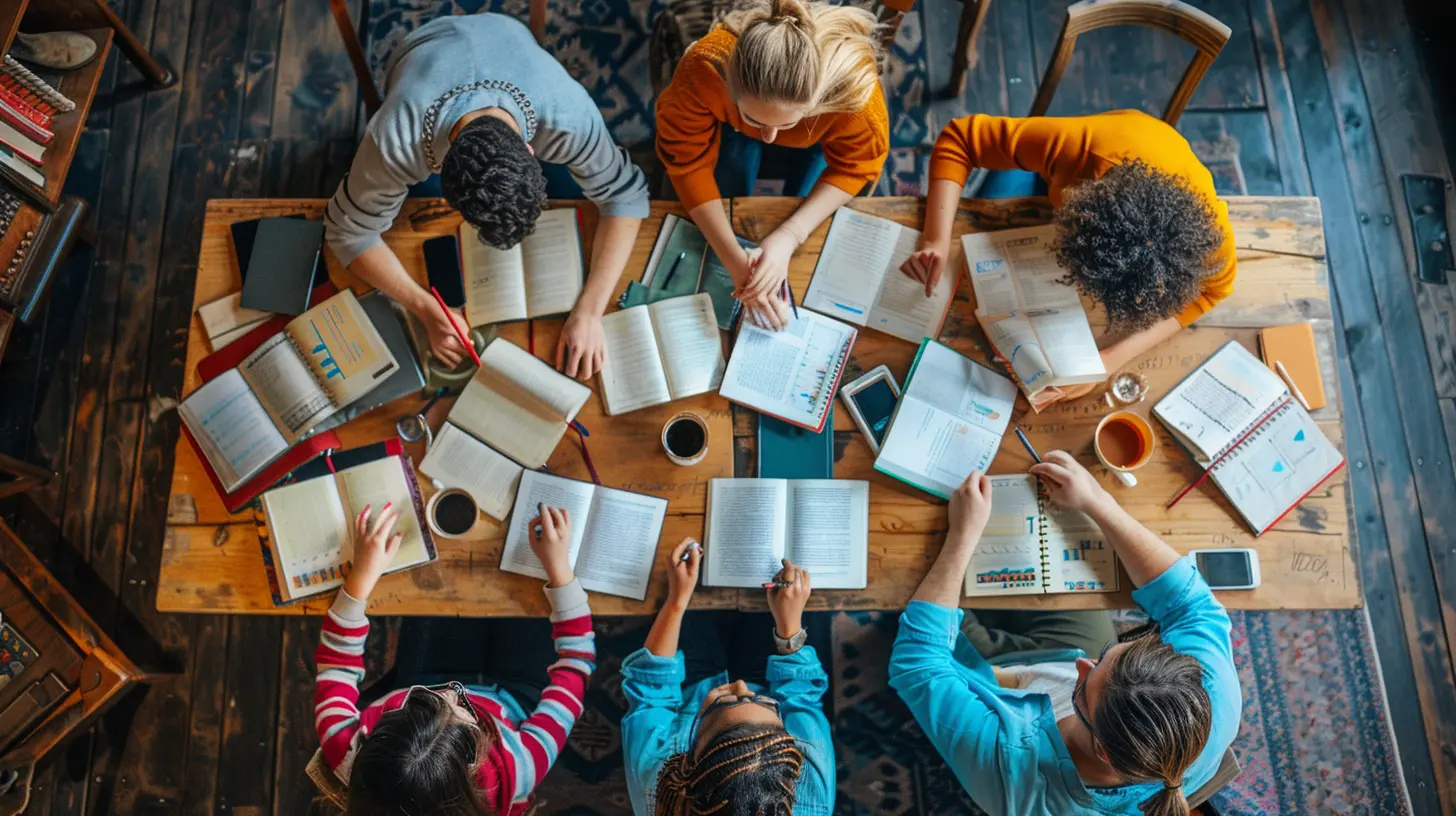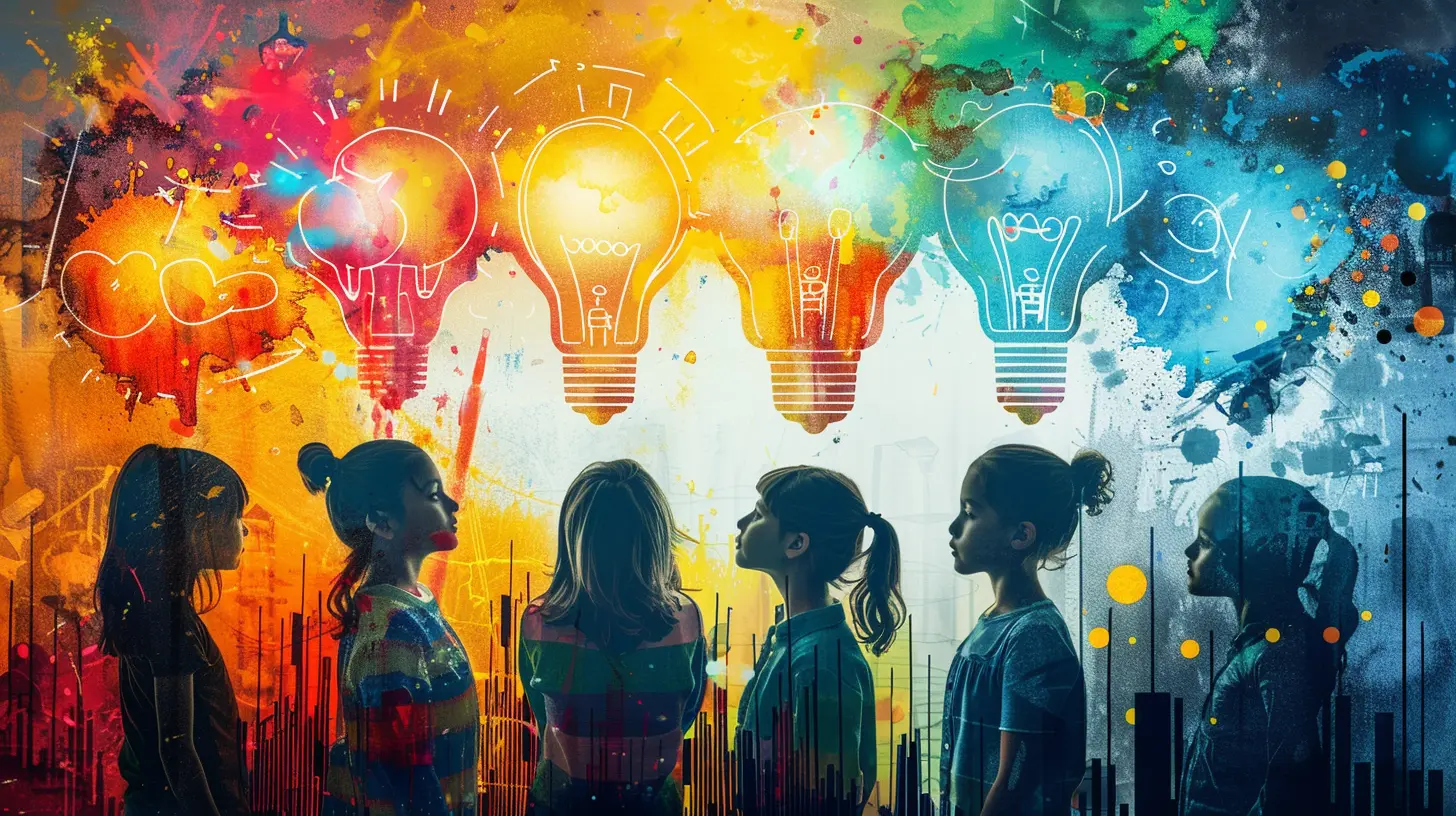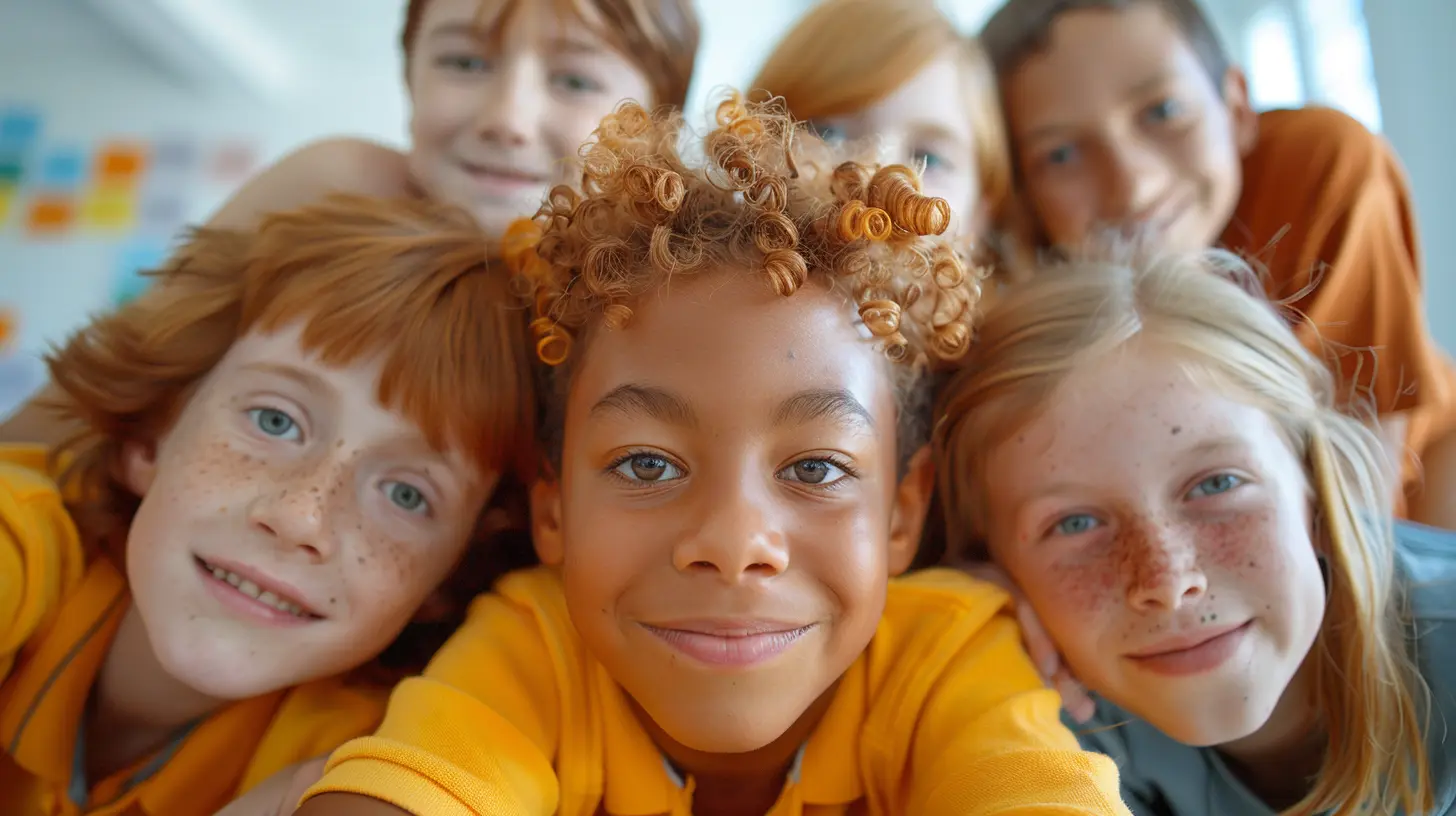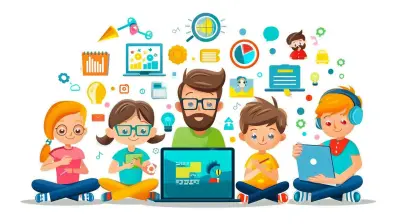How Collaborative Learning Can Reduce Student Anxiety
22 July 2025
Let’s be honest—school can be stressful. From tight deadlines and surprise quizzes to the fear of not fitting in, students face anxiety triggers every single day. But there’s a simple shift in how we learn that’s been gaining traction in classrooms and lecture halls alike: collaborative learning. And guess what? It’s not just about group projects and peer reviews; it’s a powerful tool that can help ease student anxiety.
Yeah, you heard that right. Working with peers instead of going solo can actually help students feel more confident, connected, and supported. Sounds like a win-win, right? So, let’s dive into how collaborative learning works its magic on student mental health and why it might just be the antidote to academic anxiety.
What Is Collaborative Learning Anyway?
Before we unpack its benefits, let’s get on the same page. Collaborative learning is when students actively work together to solve problems, complete tasks, or understand new concepts. It goes way beyond the traditional teacher-student model. Think discussions, group projects, study circles, peer teaching—you name it.But here’s what makes it special: it creates a learning environment where everyone plays an active role, and no one is left to tackle the academic mountain alone.
Why Student Anxiety Is a Growing Concern
Anxiety among students isn’t just “butterflies before a test.” It’s a real, often overwhelming feeling that can affect how students perform and how they feel about themselves. From elementary school to college, anxiety is creeping into classrooms at an alarming rate.According to data from the National Institute of Mental Health, over 30% of adolescents experience an anxiety disorder. And many of them don't even speak up about it because they fear stigma or being seen as weak.
Now stack that up with the pressure of getting good grades, managing time, juggling extracurriculars, and maintaining a social life. It's no wonder students feel like they’re walking a tightrope every day.
How Collaborating Relieves the Pressure
Here’s the heart of the matter. Collaborative learning isn’t just about sharing tasks—it's about sharing the emotional load, too. Let’s break down exactly how it helps ease anxiety.1. Students Feel Less Isolated
Remember that feeling when you're stuck on a homework problem and it feels like you're the only one who doesn’t get it? It’s frustrating—and lonely. But when students work in groups, they quickly realize that they’re not the only ones struggling. It levels the playing field.Think of it like being lost in a maze with a group of people rather than being lost alone. Talking things through, brainstorming together, and even making mistakes as a team reinforces the idea that struggling is totally normal—and okay.
2. Peer Support Builds Confidence
There’s something powerful about having someone your own age tell you, “Hey, you’re doing great,” or, “I used to mess this up too, but here’s what helped me.” Collaborative learning gives students that kind of daily encouragement.Over time, this support system boosts self-esteem and reduces the fear of failure. And let’s be real—confidence can go a long way in keeping anxiety at bay.
3. Learning Feels Less Like a High-Stakes Game
When teaching methods focus solely on individual performance—standardized tests, lone essays, and solo presentations—every assignment can feel like a make-or-break moment. That pressure fuels anxiety.But in a collaborative setup, the stakes are shared. Responsibility is distributed, which actually makes the work more manageable and less intimidating. Plus, learning becomes the goal—not just getting a grade.
4. It Encourages Open Communication
One of the sneakiest side effects of anxiety? It makes students shut down. They don’t ask for help. They don’t speak up. But when they’re part of a collaborative team, it becomes easier to talk.Why? Because the environment is naturally more relaxed and conversational. Students get practice in expressing thoughts, asking questions, and articulating concerns. What begins as academic talk often turns into real connection—another anxiety killer.
5. Empathy and Emotional Intelligence Skyrocket
To feel truly safe and less anxious, students need to feel understood. Collaborative environments teach kids to listen and respond empathetically. Working closely with peers forces students to consider perspectives outside their own.This emotional growth makes it easier to manage stress, resolve conflicts, and navigate tricky social dynamics in and out of the classroom.
6. It Teaches Students to Manage Challenges Together
Life doesn’t come with a cheat sheet. But collaborative learning mimics real-world challenges where people work through problems together. Students learn that it’s okay to stumble—as long as they make progress as a team.This mindset shift—from needing to be perfect to being part of a growing process—can dramatically reduce the pressure students put on themselves.
Types of Collaborative Learning That Help Fight Anxiety
Not all group work is created equal. If you’ve ever been stuck with a group that didn’t pull their weight, you know what I mean. The key is to structure collaboration in ways that are engaging and anxiety-reducing—not stressful.Here are some approaches that truly make a difference:
- Think-Pair-Share
This simple method gives students a chance to think individually, then pair up to discuss before sharing with the larger group. It eases students into participation, especially those with social anxiety.- Peer Tutoring
Students often explain things to each other in ways that just make more sense. Peer tutoring builds confidence in both the tutor and the learner, creating a safe space for exploration without judgment.- Jigsaw Method
Each group member becomes an “expert” in one part of a topic, then teaches it to the rest. This gives every student a purpose and reduces the anxiety of being the one with all the answers—or none of them.- Study Circles
In informal groups, students review material, quiz each other, and clarify doubts. These circles often turn into social support networks, not just academic ones.- Project-Based Learning
Collaborating over an extended project builds teamwork, responsibility, and camaraderie. Plus, when students are motivated by real-world problems, the learning becomes meaningful—and much less stressful.The Role of Teachers in Reducing Anxiety Through Collaboration
Let’s not forget the unsung heroes: teachers. Their role in managing collaborative learning is critical. Just throwing students into groups and saying “go” doesn’t cut it.Here’s what educators can do:
- Set clear expectations to avoid confusion and stress
- Assign roles so all students feel valued and included
- Monitor group dynamics to prevent conflicts or isolation
- Encourage reflection so students can see their growth
- Foster a safe space where questions and mistakes are welcomed
A good teacher helps students feel like part of a team, not just players in a competition.
What Students Say About Collaborative Learning
Still not convinced? Let’s hear it from the real experts—the students:> “I used to dread speaking up in class, but working in groups taught me that everyone’s nervous too. Now I feel like I can actually say what I’m thinking.”
> — Sarah, 10th grade
> “Group work used to stress me out because I didn’t want to let others down. But over time, I realized we all bring something different to the table.”
> — Justin, college sophomore
> “Once I started studying with others, I stopped thinking I had to figure everything out on my own. It made school way less frightening.”
> — Emily, 11th grade
Real stories. Real relief.
A Mindset Shift Worth Making
We often teach students to “tough it out” alone, but learning doesn’t—and shouldn’t—happen in isolation. Collaborative learning is more than just a teaching strategy; it’s a mental health support mechanism dressed up as teamwork.By connecting emotionally and intellectually, students build resilience, develop communication skills, and most importantly, stop feeling like they have to go through school alone.
So, the next time you’re tempted to assign another solo assignment or isolate yourself with your books, consider this: we’re stronger (and way less anxious) together.
Final Thoughts
Collaborative learning changes the game—not just academically but emotionally and mentally, too. By creating communities of learners who support, empathize, and grow with each other, we create more than just good students—we nurture confident, connected, and mentally healthier humans.If reducing student anxiety is the goal—and let’s be real, it should be—then bringing collaboration to the forefront of education is a no-brainer.
all images in this post were generated using AI tools
Category:
Collaborative LearningAuthor:

Bethany Hudson
Discussion
rate this article
1 comments
Makayla Lynch
Collaborative learning fosters supportive environments, helping students feel less isolated and more confident in their abilities.
August 8, 2025 at 4:17 AM

Bethany Hudson
Absolutely! Collaborative learning not only builds confidence but also strengthens community, making students feel more connected and less anxious.


